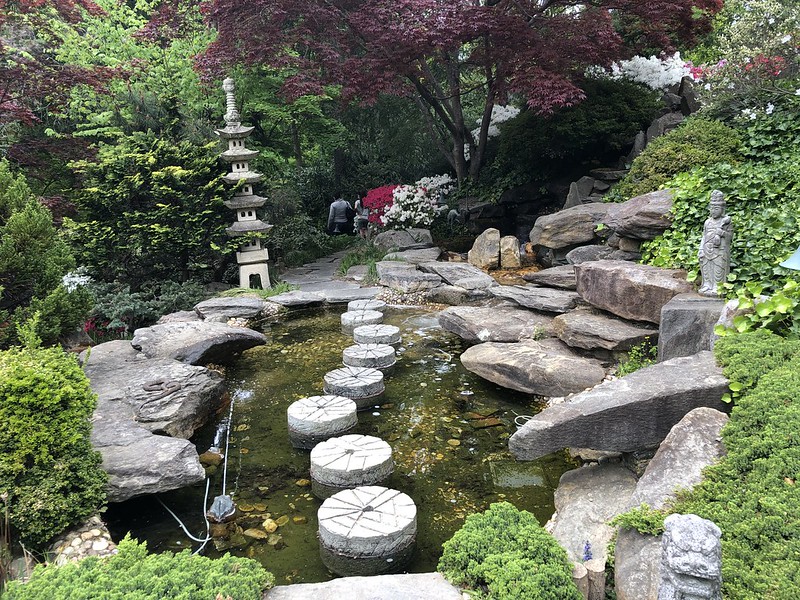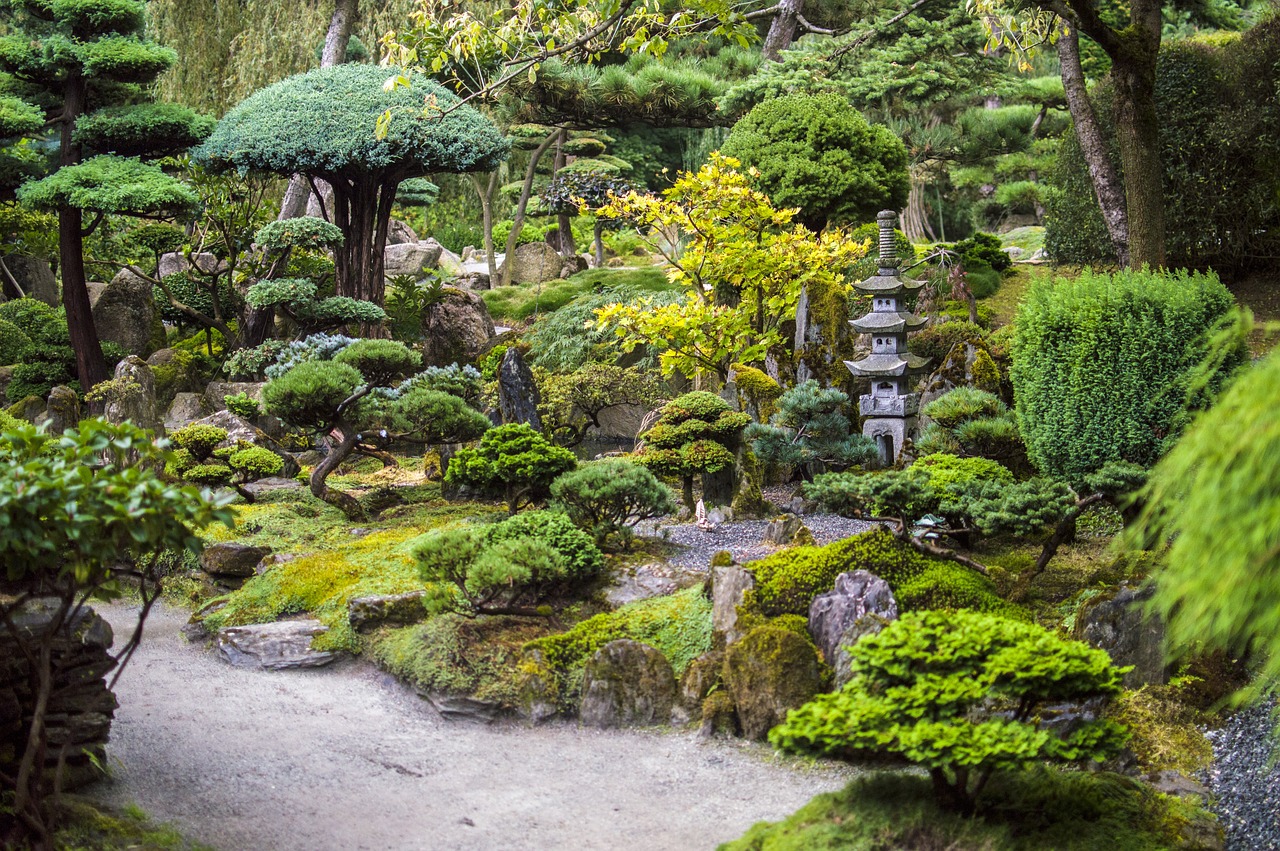Japanese gardens are renowned for their tranquility, harmony, and beauty. They serve as a serene escape from the hustle and bustle of modern life. In this comprehensive guide, we will explore the various elements that make up Japanese garden decorations and how you can incorporate them into your own outdoor space. Drawing from my personal experiences, I’ll share insights and tips that will help you create your perfect Japanese garden.
Understanding Japanese Gardens
Before diving into the decorations, it’s essential to understand the essence of Japanese gardens. These gardens are designed to evoke a sense of peace and contemplation. They typically include features that represent elements of nature, such as water, stones, and plants. Let’s explore some fundamental aspects:
Types of Japanese Gardens
- Zen Gardens: These are minimalist gardens that emphasize rocks, gravel, and sand, often used for meditation.
- Tea Gardens: Traditionally designed for the tea ceremony, they feature winding paths and natural elements.
- Strolling Gardens: These are larger gardens designed for walking and enjoying various views from different perspectives.
Key Elements of Japanese Gardens
Understanding the main components will help you appreciate how they contribute to the overall aesthetic:
- Water Features: Ponds, streams, and waterfalls symbolize life and tranquility.
- Stones: Natural stones are used to represent mountains and islands.
- Plants: A carefully curated selection of plants enhances the garden’s beauty.
- Structures: Pagodas, lanterns, and bridges add visual interest and functionality.

Essential Japanese Garden Decorations
Now, let’s delve into some quintessential decorations that will transform your outdoor space.

Japanese Lanterns
Japanese lanterns, or tōrō, are functional and decorative elements that illuminate paths and create a serene atmosphere in the garden.
Types of Japanese Lanterns
| Type | Description | Best Use |
|---|---|---|
| Stone Lanterns | Made from natural stone, providing an authentic look. | Pathways, ponds, and focal points. |
| Hanging Lanterns | Often made of paper or fabric, creating a soft glow. | For decorative purposes, especially during festivals. |

Pros and Cons of Japanese Lanterns
Pros
- Enhance the aesthetic appeal.
- Provide functional lighting.
- Available in various designs and materials.
Cons
- Stone lanterns can be expensive.
- Hanging lanterns may require more maintenance.
Water Features
Incorporating water into your garden design is essential in Japanese aesthetics. It brings life to the garden and acts as a reflective element.

Choosing Water Features
- Ponds: Can host koi fish and water plants.
- Streams: Create a sense of movement; can be achieved through water pumps.
- Waterfalls: Add a dynamic element to your landscape, attracting wildlife.
Tips for Maintaining Water Features
- Regularly filter and clean the water.
- Control algae growth with natural and chemical solutions.
- Ensure proper water flow and aeration.

Rock Gardens
Rock gardens or karesansui are essential in Zen gardens, emphasizing simplicity and natural beauty.
Creating a Rock Garden
Here are some steps to help you create a peaceful rock garden:
- Select a location with good drainage.
- Create a layout using varying sizes of rocks.
- Add gravel or sand for the base, raking it for a soothing pattern.
- Incorporate minimal plant life, such as moss or succulents.

Pros and Cons of Rock Gardens
Pros
- Low maintenance.
- Perfect for small spaces.
- Provides a calming visual experience.
Cons
- Can appear bare without plant life.
- Requires careful planning to avoid clutter.
Incorporating Plants into Your Japanese Garden
The right selection of plants can enhance your garden’s tranquility. Below, I’ll share some quintessential Japanese plants to consider.
Essential Japanese Plants
| Plant | Description | Best Placement |
|---|---|---|
| Bonsai Trees | Miniature trees that symbolize nature and art. | As focal points or in containers. |
| Japanese Maples | Beautiful and colorful leaves, changing with seasons. | In corners or alongside pathways. |
| Moss | Creates a lush green carpet, enhancing serenity. | On rocks or under trees. |
Tips for Plant Care
- Understand the sunlight needs of each plant.
- Prioritize organic methods for pest control.
- Regularly prune to maintain aesthetics and health.
Japanese Structures and Their Symbolism
Structures in a Japanese garden tell a story and contribute to the atmosphere. Below are key structures and their meanings.
Bridges
Bridges symbolize the transition between the physical and spiritual realms. They invite exploration and curiosity.
Pagodas
Pagodas serve as focal points and are often used as tea houses or resting spots.
Torii Gates
Toriis mark the entrance to sacred spaces, creating a boundary between the mundane and the divine.
Designing Your Japanese Garden: Step-by-Step
Ready to create your own sanctuary? Here’s a step-by-step guide to designing your Japanese garden.
Step 1: Planning Your Space
- Measure your yard and sketch a layout.
- Decide which elements—water, stones, or plants—you want to include.
Step 2: Establishing a Focal Point
Choose one or two main features, such as a pond or a stone lantern, to draw the eye.
Step 3: Arranging Elements Harmoniously
Use the principles of balance and asymmetry to arrange your chosen elements.
Step 4: Selecting Plant Life
Incorporate a variety of plants according to seasonality and growth patterns.
Step 5: Maintenance and Adjustments
Regular maintenance is key to keeping your garden serene and beautiful. Plan to adjust elements as they grow and change.
Personal Experience: My Journey with Japanese Gardens
I still remember the first time I visited a Japanese garden. The tranquility of the space and the meticulous attention to detail struck me deeply. It inspired me to create my own Japanese garden at home. Starting small, I incorporated a few lanterns and plants, gradually adding a water feature and rock garden over time. Watching the seasons change and how my garden evolved has brought me immense joy, and it’s become my favorite place for reflection and relaxation.
Frequently Asked Questions (FAQs)
What are the key elements of a Japanese garden?
The key elements include water features, stones, plants, and decorative structures like lanterns and bridges.
How do I maintain a Japanese garden?
Regular maintenance includes pruning plants, cleaning water features, and ensuring that paths and decorations are in good condition.
Can I create a Japanese garden in a small space?
Absolutely! Focus on key elements, like a small rock garden or a few carefully chosen plants, to create a serene atmosphere.
What is the significance of water in Japanese gardens?
Water symbolizes life and tranquility, acting as a reflective surface that enhances the garden’s aesthetic and spiritual value.
Are Japanese gardens difficult to maintain?
While they require regular care, proper planning and the right selection of plants can make maintenance manageable.
Conclusion
Japanese gardens are more than just outdoor spaces; they are reflections of our desire for peace and harmony in our lives. By incorporating traditional decorations and elements, you can create an oasis that offers tranquility and beauty. Whether you begin with small changes or undertake a complete redesign, the journey of creating your Japanese garden can be incredibly rewarding. Embrace the process, and enjoy the serene space you cultivate.